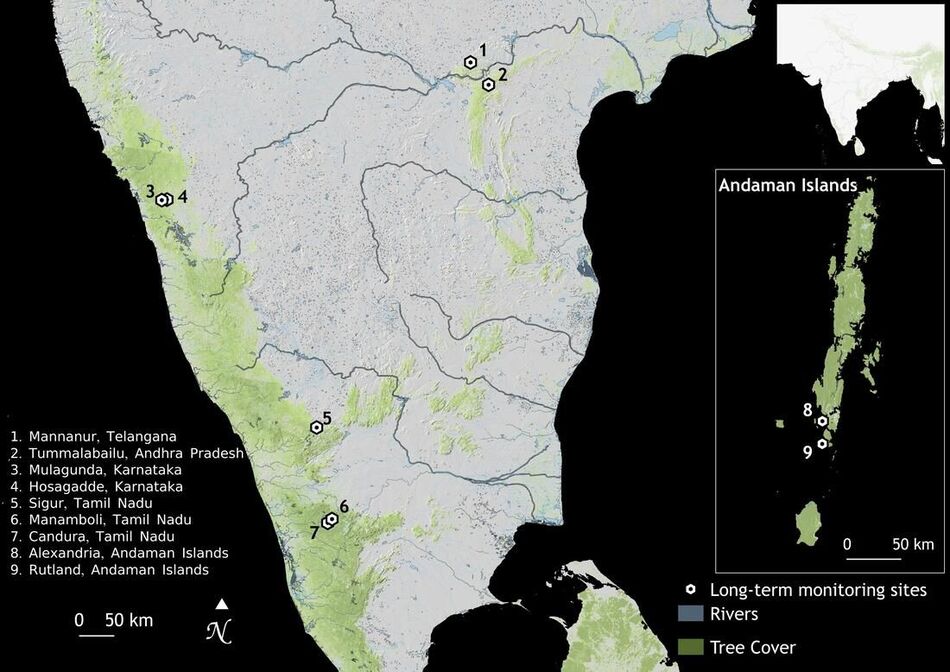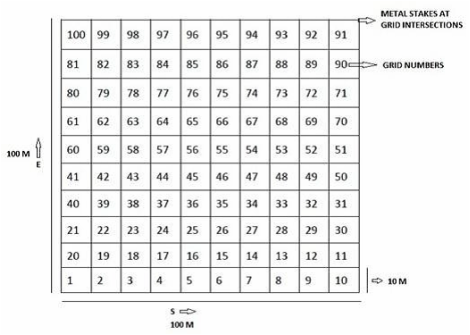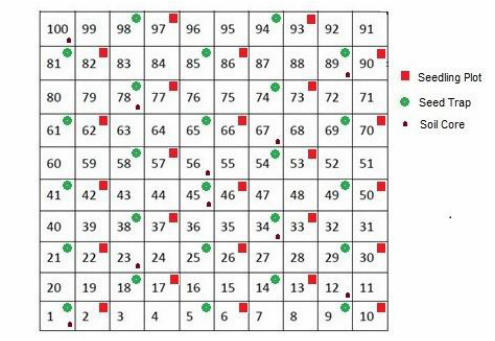 Location of LEMoN 1 ha plots
Location of LEMoN 1 ha plots
The LEMoN network comprises seven 1 ha plots The tropical evergreen forest plots in Rutland and Alexandria located in the South Andaman Islands are being established and monitored in collaboration with ANET. The tropical evergreen forest plots at Hosagadde and Mulagunda in the central Western Ghats were established in partnership with ATREE. The Tummalabailu and Mannanur plots within the Nagarjunasagar Srisailam Tiger Reserve (NSTR), Andhra Pradesh and Amrabad Tiger Reserve, Telangana respectively, have been established in collaboration with HYTICOS and the Andhra Pradesh and Telangana Forest Department. The West Seijosa plot in Pakke Tiger Reserve was established in collaboration with the Arunachal Pradesh Forest Department. These plots represent southern tropical dry mixed deciduous forest with grasses in the understorey.
While all plots are established following identical protocols and with the common objective of understanding forest vegetation and carbon dynamics, data from individual sites may also be used to address standalone research questions. For example, the Andaman plots provide a comparison between herbivore-free forests and forests with herbivores (introduced spotted deer Axis axis). In the Western Ghats, the research is also geared towards understanding the effect of extreme rainfall events on forest hydrology and carbon. In Andhra Pradesh and Telangana, the focus is on understanding the influence of fire and herbivory on long-term vegetation dynamics.
While all plots are established following identical protocols and with the common objective of understanding forest vegetation and carbon dynamics, data from individual sites may also be used to address standalone research questions. For example, the Andaman plots provide a comparison between herbivore-free forests and forests with herbivores (introduced spotted deer Axis axis). In the Western Ghats, the research is also geared towards understanding the effect of extreme rainfall events on forest hydrology and carbon. In Andhra Pradesh and Telangana, the focus is on understanding the influence of fire and herbivory on long-term vegetation dynamics.
All plots comprise an area of 1 ha (100m X 100m) divided into 100, 10 m * 10 m grids within which all freestanding, live trees and palms (above 1.3 m in height and greater than or equal to 10 cm in GBH) and lianas are enumerated, tagged, mapped, measured, installed with dendrometer bands and monitored. Dendrometer bands which are essentially spring-loaded stainless steel bands that are used to make short-term repeated measurements of the increase and decrease in circumference of trees are monitored four times a year to capture fine scale seasonal variation in growth. Plots are re-censused annually. In addition 25 seed traps and seedling plots each of 1 m * 1 m are established across every 1 ha plot as shown in the figure below to collect data on seed rain, seed traits once every fortnight and monitor seedling recruitment, growth, and survival on a monthly basis. Soil cores up to a depth of 1 m are also collected using standard protocols to characterize physical and chemical properties from ten predetermined sampling locations (seen in the figure below) within every 1 ha plot. Data on plant functional traits is collected using international accepted protocols from 5 randomly selected individuals (from outside the plot) of the 10 most common species within every 1 ha plot. The data collected includes specific leaf area, GBH, height of tree, height of first branching, canopy dimensions, bark thickness and wood density.
The establishment and monitoring of plots is carried out using globally accepted standard protocols developed by networks such as RAINFOR GEM and CTFS so that our network will eventually contribute to global analyses of vegetation dynamics and global models of climate change responses of terrestrial ecosystems, in which data from this region are currently poorly represented.
Get in touch with us if you would like to know more about our seed and seedling monitoring protocols.
Get in touch with us if you would like to know more about our seed and seedling monitoring protocols.


